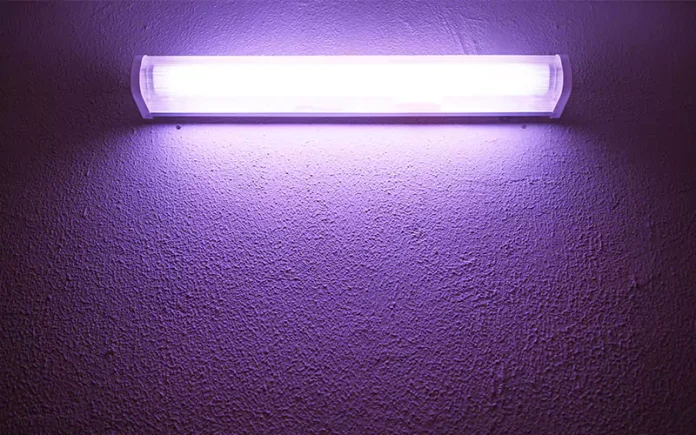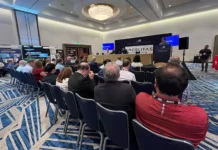by Troy Cowan, coordinator, IUVA Healthcare/UV Working Group
No surprises. As we try to save lives, our GUV industry is faced with multiple challenges on many different fronts as to how GUV can be used and marketed. These challenges are coming from aggressive EPA and FDA enforcements, restrictive legislation and incomplete regulatory studies, all advocating some version of “eliminating all possibility of doing harm” as the best course of action, regardless of how small the risk or how large the potential public benefit.
These attempts to eliminate all possibilities of harm result in “regulations for the sake of regulations” to avoid all possibility of risk. This approach is taken by people who lack trust in GUV technologies and have little knowledge or expertise in GUV’s proven advantages and benefits in reducing illnesses and mitigating pandemics. That lack has stymied the adoption of serious solutions in the marketplace and disregarded the significant potential benefits to the general population, all to the detriment of the public’s health. The intent of this Op/Ed is to face these factors head-on and look at approaches – Communicate, Collaborate, Consolidate and Educate (C3E) – to enhance the acceptance of GUV as part of a balanced infection prevention system in public spaces.
Challenges 1, 2 and 3
To do this requires trust, something currently lacking due to the many, multi-faceted external challenges we’re facing. The following discuss some of those challenges.
- EPA’s enforcement style – “guilty, don’t ask questions” – regarding potential label claims.
EPA is becoming overly aggressive in its enforcement of what it deems to be “false and misleading” labeling, pursuing claims that take advantage of gray areas in the existing regulatory space to pursue “its new mandate to protect the public against potentially misleading claims” 1 that have no ready avenue for appeal. In its review of device labels and marketing content, the notices EPA has provided to companies deemed to be in violation “have not always been accompanied by detailed explanations of the alleged deficiencies.” 2 This is in keeping with EPA’s longstanding policy that “…industry bears the obligation of determining how to comply with legal requirements.” 3 At the same time, EPA is “generally refusing to provide what alternate language would be acceptable to correct allegedly deficient claims,” 4 greatly complicating the possible formulation of an industry guideline for labeling products in a way that’s meaningful to consumers. - FDA’s approach to regulating GUV technology is confusing.
FDA has begun enforcing a new Product Classification for GUV devices used to disinfect surfaces of Class-II medical devices, known as Product Classification 880.6510, “Whole Room Microbial Reduction Device.” 5 There is confusion about how this classification for devices that disinfect “medical device surfaces” affects coverage of other GUV devices, defined as “self-contained open-chamber UV disinfection devices intended for whole room disinfection” exempted from FDA coverage under 21CFR880.6600. 6 (These currently are governed by EPA.)This confusion is further compounded by the lack of final implementation of the new 880.6510 Product Classification. To be formally adopted as part of the Federal Regulatory provisions requires publication in the Code of Federal Regulations. This has yet to be done, as evidenced by the eCFR (electronic Code of Federal Regulations website), current as of May 2, 2024, showing no entry for 880.6510. 7 - California is considering banning all GUV air treatment devices that emit >5 ppb ozone.
California Senate Bill No. 1308, 8 introduced on February 15, 2024, requires the California Air Resources Board (CARB) to implement regulations by July 1, 2026, limiting ozone emissions to no greater than 5 ppb for air disinfection devices. The regulations would implement testing, certification and labeling requirements, with violators being subject to “crimes and penalties for violations of air pollution laws and any rule, regulation, permit or order of the state board.” 9
This bill and its provisions were based on a UC Davis White Paper, which cites UL2998 as the source for the “more stringent ozone emission standard of 5 ppb.” 10 However, per UL website information, UL2998 is not a standard but an “Environmental Claim Validation program” created by UL to “help manufacturers ensure their devices’ ozone levels stay below the quantifiable ‘limit of detection’ of 0.005 ppm (5 ppb).” 11 Further, based on its own admission, the white paper reaches its conclusions based on incomplete information, based on statements such as:
- “a well-informed decision to implement (or not implement) electronic air cleaning technology requires an assessment of the potential risks versus the potential benefits…” 12 This assessment was not developed as part of the paper, inferring potential benefits had not been considered in the analysis.
- “additional research is needed to quantify performance … so that the risks versus benefits can be considered…” 13 inferring they had no method to assess performance, nor a method for considering risks vs. benefits.
- “ASTM-WK81750 (under development) aims to provide a standard method of test for evaluating emissions of byproducts of greatest health concern…” 14 suggesting detrimental health inferences of these emissions were being made when there was not yet a standardized method to measure them, much less assess their toxicity.
Regulatory Roadblocks
All of these roadblocks to trust appear to stem from the regulators’ desire to keep the public from any potential harm that either might be caused by “potentially false and misleading claims,” perceived voids in regulatory coverage in the medical sector, or possible exposure to hazards yet to be analyzed or quantified.
Such a position to protect the public from all possible risk denies our citizenry the opportunity to take advantage of the numerous benefits of GUV technology. Further, it runs counter to the “action-oriented” guidance contained in Principle 15 of the Precautionary Principle, 15 which states, “Where there are threats of serious or irreversible damage, lack of full scientific certainty shall not be used as a reason for postponing cost-effective measures to prevent environmental degradation.” 16 [Note: The author considers public health to be included in the all-inclusive term “environment.”]
In this application of the Precautionary Principle, the following interpretations have been used:
- The “threats of serious or irreversible damage” stem from the threat of widespread airborne infections that could reach pandemic proportions, rapidly evolving beyond the reach of vaccine development and potentially becoming a Multiple Drug Resistant Organism (MDRO), difficult/expensive to treat and debilitating to live with (e.g., long COVID 17).
- Contrary to the Principle’s admonition against it, the “lack of scientific uncertainty” is being used “as a reason for postponing cost-effective measures to prevent environmental degradation,” as evidenced by Challenges 1, 2 and 3, above.
For regulators to build roadblocks to technologies that can help mitigate the threat of airborne and surface-borne pathogens and illnesses is counterproductive and leads to distrust for the regulators. This especially is true when the World Health Organization recognizes the need for a major policy shift to treat viral products in the air, not just droplets and small aerosols. 18
In the 4th Quarter 2023 issue of UV Solutions, 19 we presented an overview of the many consensus standards and related initiatives recently completed and in process. The intent was to encourage readers to keep communicating about these initiatives: collaborate in their execution, help consolidate them to make them more effective and educate our users about the resulting products (a process we coined as C3E).
Why do this? Because the GUV industry, unlike the regulators, trusts the science, has faith in the evolving GUV technologies and believes in the integrity of our organizations. True, this hasn’t happened overnight. But we’ve been working on it, in an orderly, stepwise pattern of growth. As examples of such growth in credibility and expertise, we would offer the following:
- ANSI has just approved ASHRAE 185.3-2024. – “Method of Testing Commercial and Industrial In-Room Air-Cleaning Devices and Systems for Microorganism Bioaerosol Removal or Inactivation in a Test Chamber” 20 for use in testing GUV devices for efficacy. This has been an industry-wide, consensus-based effort and meets all the requirements of OMB Circular A-119 for possible incorporation as a testing protocol into federal regulations and procurements. Results of any 185.3 compliant tests also are citable in labeling and product material.
- Lighting researchers at Pacific Northwest National Laboratory (PNNL) have been testing germicidal ultraviolet (GUV) lamps and luminaires with some surprising results. 21 They put several off-the-shelf GUV products to the test and found substantial energy-efficiency opportunities. In short, through a one-year simulation of an office building in Chicago, Illinois, PNNL showed that supplementing ventilation with in-room GUV would use nearly 80% less energy compared to HVAC-only approaches. 22
In conclusion, it is sad that our regulators are not trusted by industry and the population. Every day, there is another anecdote of this or that agency holding a company to a
standard that is a mere interpretation, not a regulation. The failure of the regulators to have performance or efficacy standards and use some on-the-spot interpretation of a regulation for which the regulator has no knowledge costs the consumer in terms of expense for products and trust for the government to hold the industry to scientifically based standards.
In contrast, we have performance measurement standards ready to use – consensus-based and industry-backed. One way to build trust – in ourselves, our markets and our technology – is to do the testing in accordance with the ANSI standards we’ve developed, incorporate the results into our product labels and information, and take it into the marketplace to see what happens. If a regulator questions things, take them through the process, and show them your “homework.” We are curious to see the regulator’s response.
Bottom line: It is up to the industry to trust its science; build better, cheaper, safer technology; and wait for regulators to mature. Let’s trust our technology, our ANSI standards and our labeling and use our marketing initiatives to rebuild trust in the public domain. Who knows, maybe we can get our regulators to trust us, too.
Ultimately, it’s all about saving lives. Who do you trust?
References
- R. Zarghamee, M. Morrison, Pillsbury Winthrop Shaw Pittman LLP, “EPA Takes Aim at Pesticide Devices”, 8 Nov. 2021, (https://www.pillsburylaw.com/en/news-and-insights/epa-takes-aim-at-pesticide-devices.html) last accessed 5 May 2024
- Ibid
- Ibid
- Ibid
- FDA, 21CFR880.6510, “Products and Medical Procedures,” Product Classification 880.6510, “Whole Room Microbial Reduction Device,” https://www.accessdata.fda.gov/scripts/cdrh/cfdocs/cfpcd/classification.cfm?id=QXJ, last accessed 5 May 2024
- FDA, 21CFR880.6600, “Products and Medical Procedures,” Product Classification 880.6600,”Ultraviolet (UV) radiation chamber disinfection device,” https://www.ecfr.gov/current/title-21/section-880.6600, last accessed 5 May 2023
- Code of Federal Regulations Website, eCFR, for Title 21 Chapter I Subchapter H Part 880 Subpart G — “General Hospital and Personal Use Miscellaneous Devices”
- Sen Gonzales, State of California Senate Bill 1308, “Ozone: indoor air cleaning devices,”, 15 Feb 2024, amended 18 March 2024, https://legiscan.com/CA/text/SB1308/id/2962681, last accessed 7 May 2024
- Ibid.
- C. Cappa, et al, “Air Pollutant Emissions and Possible Health Effects Associated with Electronic Air Cleaners,” 20 September 2023, https://ww2.arb.ca.gov/sites/default/files/2023-09/CARB%2022RD003%20White%20Paper%20Sept%2020%202023.pdf, last accessed 7 May 2024
- UL Solutions, “Zero Ozone Emissions Validation,” 2022, https://www.ul.com/services/zero-ozone-emissions-validation, last accessed 7 May 2024
- Cappa, et al (see above)
- Ibid
- Ibid
- J. Pinto-Bazurco, International Institute for Sustainable Development, “The Precautionary Principle,” 23 October 2020, https://www.iisd.org/articles/deep-dive/precautionary-principle, last accessed 7 May 2024
- Ibid
- A. Haque and A Pant, “Long Covid: Untangling the Complex Syndrome and the Search for Therapeutics,” PubMed Central, PMC9864843. published online 2022 Dec 22. doi: 10.3390/v15010042, https://www.ncbi.nlm.nih.gov/pmc/articles/PMC9864843/ last accessed 8 May 2024.
- A. Maxmen | KFF Health News. “The WHO overturned dogma on how airborne diseases spread. Will the CDC act on it?,” NBC News, 11April 2024. https://www.nbcnews.com/health/health-news/who-airborne-disease-cdc-updated-guidelines-rcna149843, last accessed 8 May 2024
- T. E. Cowan, “Focus on Healthcare/UV Disinfection: Communicate, Collaborate, Consolidate and Educate: C3E“, UV Solutions, 20 Dec. 2023, https://uvsolutionsmag.com/articles/2023/focus-on-healthcare-uv-disinfection-communicate-collaborate-consolidate-and-educate-c3e/, last accessed 3 May 2024
- ASHRAE, “Standard 185.3-2024 — Method of Testing Commercial and Industrial In-Room Air-Cleaning Devices and Systems for Microorganism Bioaerosol Removal or Inactivation in a Test Chamber (ANSI Approved)”, 30 April 2024, https://store.accuristech.com/ashrae/standards/ashrae-185-3-2024?product_id=2902080, last accessed 8 May 2024
- Elsie Puig-Santana, PNNL, “Lab Testing of GUV Products Reveals Accurate Performance Data Needed,” 4 April 2024, https://www.pnnl.gov/publications/lab-testing-guv-products-reveals-accurate-performance-data-needed, last accessed 8 May 2024
- C. Faulkner, et al, “Comparison of effectiveness and energy use of airborne pathogen mitigation measures to meet clean air targets in a prototypical office building,” Building and Environment, Volume 257, 1 June 2024, 111466. https://www.sciencedirect.com/science/article/abs/pii/S0360132324003081?via%3Dihub, last accessed 8 May 2024






